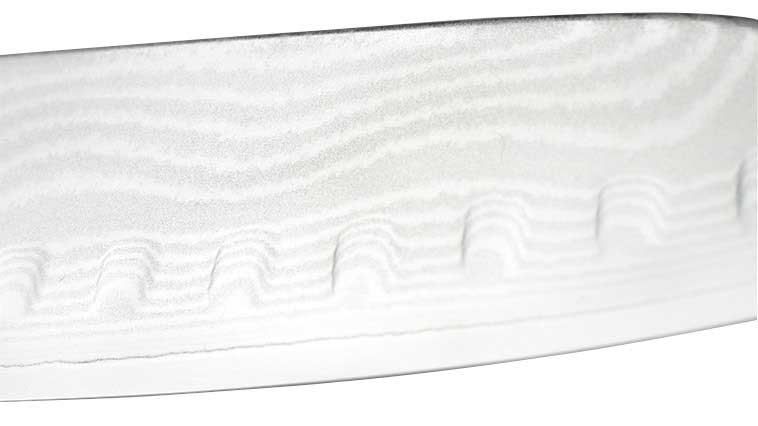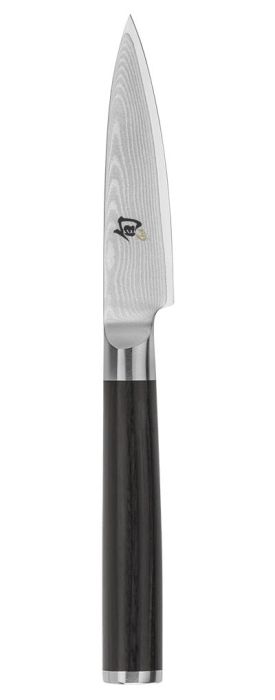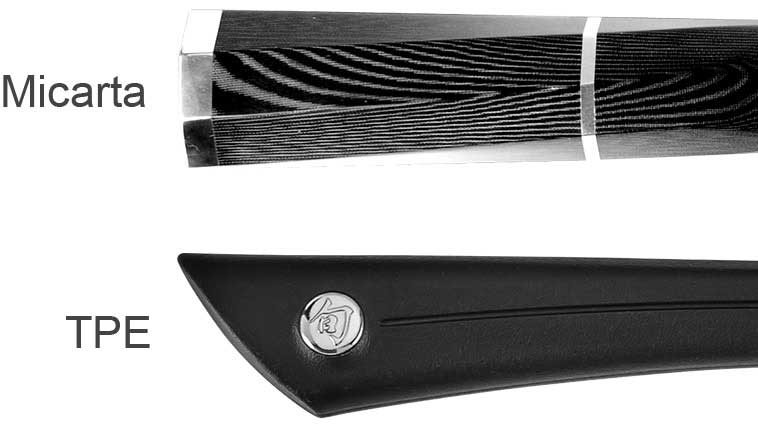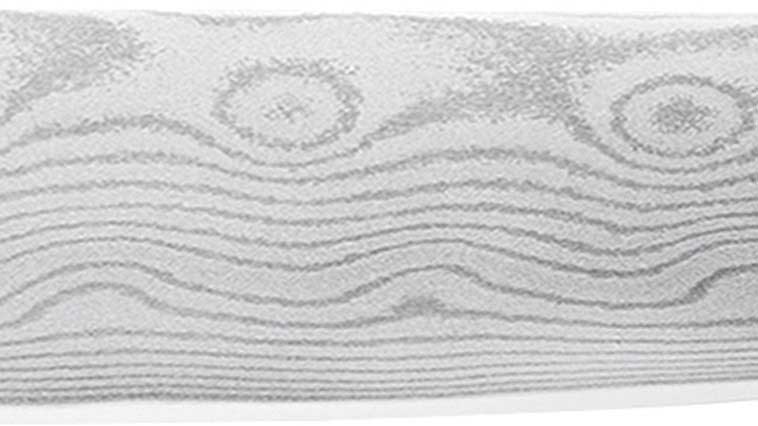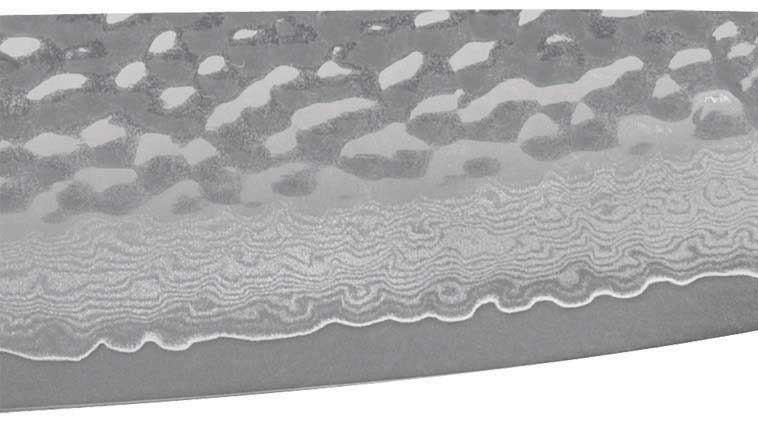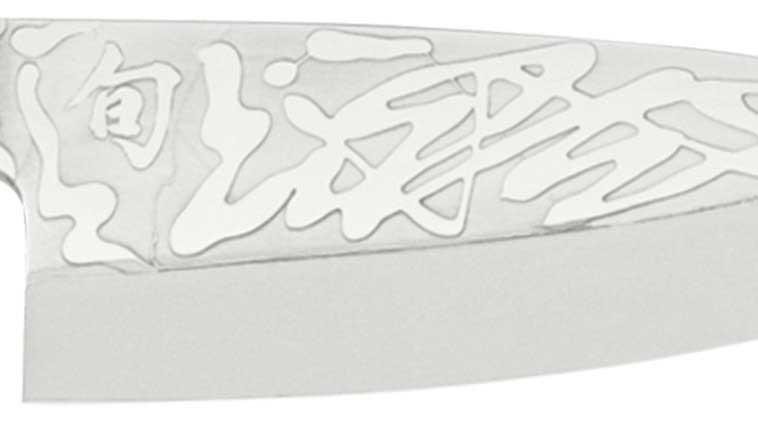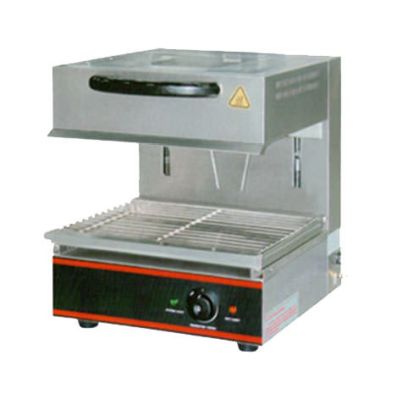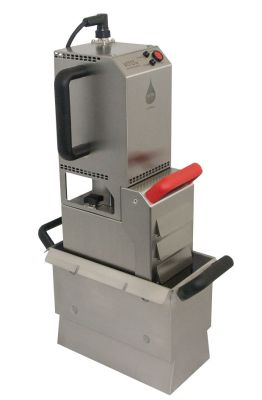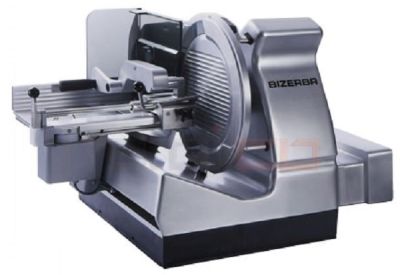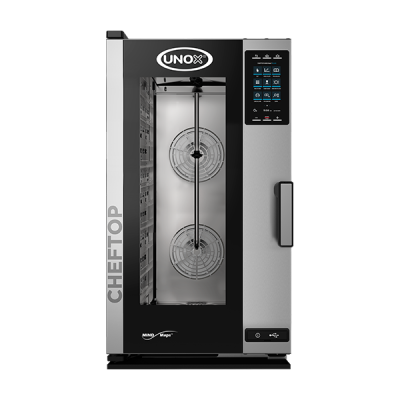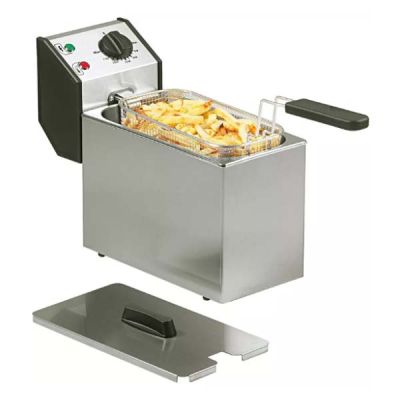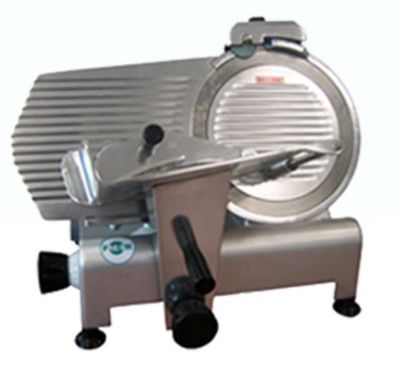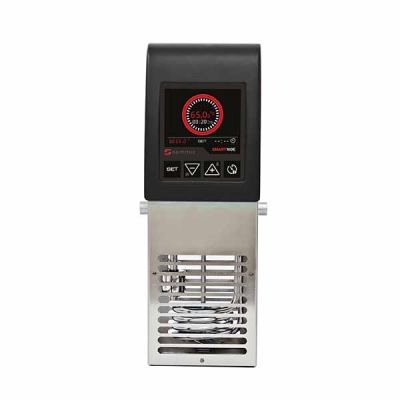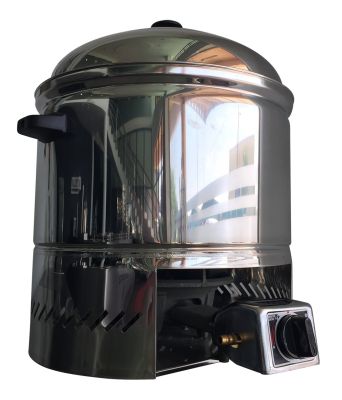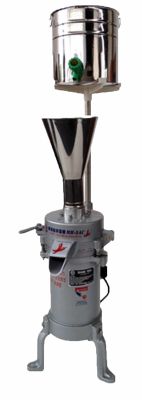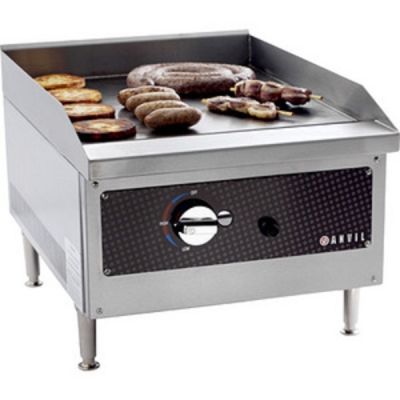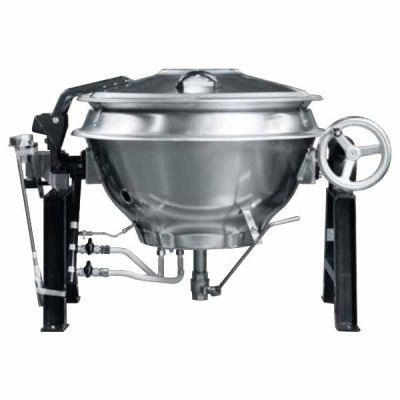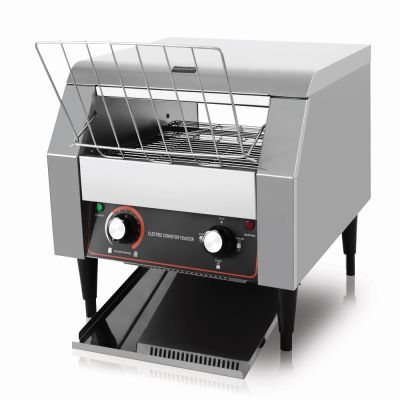0% Instalment
Everyday Low Price
Points Rewards
0% Instalment
Everyday Low Price
Points Rewards
0% Instalment
Everyday Low Price
Points Rewards
The Shun Classic Paring Knife is a must-have for every kitchen. In a way, you can think of it as the mini version of the chef's knife because, like the chef's knife, the paring knife is quite versatile. The paring knife gets its name from its main function—removing or “paring” away things like peels or pits from fruits and vegetables. It’s ideal for peeling, coring, trimming, decorating, and other detail work. Its small size gives you complete control over the tip and edge of the blade. Generally, you'll use this knife in your hand rather than against a cutting board, though paring knives can also be used for chopping small foods, such as garlic cloves or ginger.
The Shun Classic Paring Knife is part of the Shun Classic line of tasteful and contemporary cutlery. The Shun Classic line features beautiful Damascus-clad blades and D-shaped ebony PakkaWood® handles. Yet behind these handcrafted knives' beauty is function: razor-sharp blades offering top performance. Shun's proprietary high-performance VG-MAX steel, which provides incredible edge retention, is clad with Damascus stainless steel, then ground and bead-blasted, revealing the flowing pattern of the layered steel. The result is a line of knives that are sharp, durable, and corrosion resistant, as well as beautiful to behold. The Shun Classic line also offers you the widest assortment of both traditional culinary blade shapes and cutting-edge designs, so you can always find the right knife for the task.
INNOVATIVE KNIFE TECHNOLOGIES & ADVANCED MATERIALS KEEP SHUN OUT FRONT
Incredibly sharp edges and unmatched aesthetics set Shun knives apart from every other kitchen knife on the market today. In the great tradition of Seki City, Japan's sword and knifemaking center, every knife is handmade by highly skilled specialists and requires at least 100 handcrafted steps to complete. Every day, the legacy of ancient sword smiths serves as inspiration to the artisans in the Kai factories. Kai’s 100-year-old tradition of blade-making excellence, combined with the newest technology and the most advanced materials, makes every Shun knife a functional work of art.
ADVANCED, HIGH-PERFORMANCE STEELS
- Shun uses advanced, high-performance steel for our blades
- Shun steel is hard so blades an be made thinner, lighter, and sharper
- Advanced steel combines with a tradition of excellence to make knives "at the peak of perfection"
Steel is a blend (alloy) of iron and carbon. Most steel also has other ingredients in the recipe—ingredients that are added to enhance specific characteristics in the final product. For example, stainless steel also contains chromium to improve stain resistance; vanadium improves strength, toughness, and helps keep the steel fine-grained and smooth during heat treatment. We use the most advanced high-performance steels to create our Shun kitchen cutlery. State-of-the-art manufacturing technology, premium materials, and Kai’s 100-year-old tradition of unparalleled blade-making excellence combine to make Shun cutlery the finest there is.
VG10 stainless steel—This premium steel adds cobalt for strength and hardness, vanadium for superior edge retention. High-performance VG10 needs minimal care to avoid corrosion, takes a wicked edge, and holds it for a very long time. Resharpening is easy—when the time comes.
VG-MAX—is the latest in the VG line of "super steels," steels that have gained recognition throughout the kitchen knife industry as some of the finest cutlery steels available. It builds on the highly successful VG10 and is proprietary to Shun. VG-MAX includes additional carbon to improve strength and durability. It has more chromium for wear and corrosion resistance. More cobalt enhances strength. Increased tungsten enables the steel to be very fine-grained—so the edge can be extremely fine and sharp. Molybdenum improves corrosion resistance and strength. Vanadium improves impact resistance and enables the steel to form vanadium carbides, which enhance cutting performance. Shun hardens the VG-MAX in its knives to 60-61 on the Rockwell Hardness Scale, a standard measure of material hardness.
SG2 stainless steel—is proprietary “micro carbide” steel. The ultra-dense grain structure and purity of SG-2 make it both harder and yet less brittle than other high-performance steels. The result is a knife with the ability to take and hold an incredibly fine edge of unparalleled durability. Because of its combination of extreme edge performance and durability, SG-2 is considered by many to be the world’s best blade material for use in kitchen knives.
High-carbon "Blue" steel—Many professional chefs swear by carbon-steel knives. Because carbon steel is so fine-grained and hard, it can be sharpened to a razor edge. What’s more, it can hold that edge for a long time, and then be re-sharpened easily. This is vitally important for professional chefs who put their knives to hard use every day. While professionals expect to sharpen their knives daily, they also expect those knives to hold their sharpened edges all day—even under high, professional levels of use. An important thing to understand about the steel in the Shun Blue Steel line is that the name does not refer to the color of the steel, but to the color of the paper in which the raw steel comes wrapped. “Blue” refers to a particular grade of fine-grained carbon steel; it may be likened to the grade of steel found in handmade carbon-steel knives. This can be a confusing point because carbon steel does eventually develop a patina that could be described as blue-grey, but when it comes to describing this fine carbon steel, “blue” refers to the grade, not the color, of this steel.
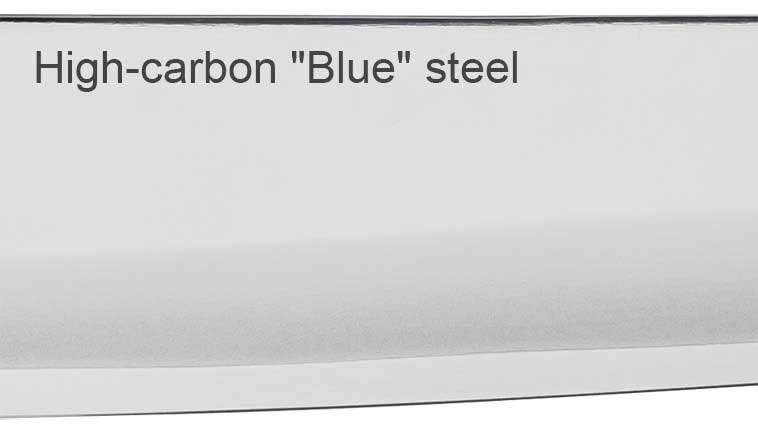
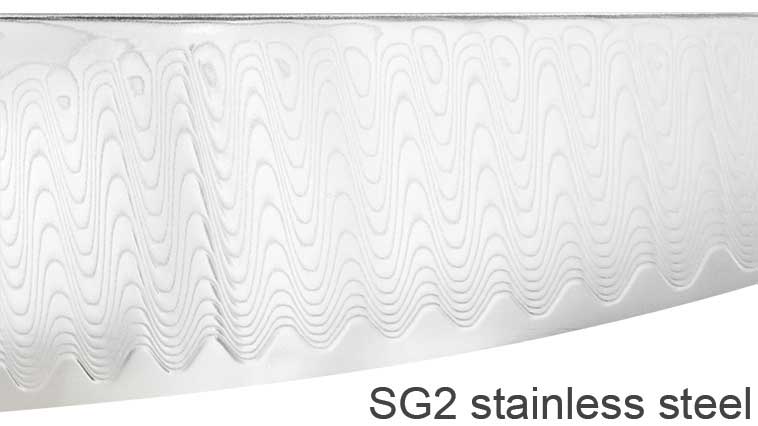
TRADITIONAL KNIFEMAKING STYLES
- Kasumi
- Honyaki
- San mai
KASUMI
- A hard steel core is clad with a "softer" steel or steels to support it
- Kasumi combines two or more types of steel to take advantage of the key characteristics of each of them
- This method is similar to how samurai swords are traditionally made
Kasumi is a traditional Japanese style of knifemaking in which an extremely hard core of high-carbon steel is clad—that is, sheathed or covered—with exterior layers of another steel or steels. The somewhat “softer” or more ductile exterior cladding protects the inner cutting core. In Japanese, kasumi means “mist” and it is so called because the exterior steel can have a beautiful misty appearance when compared to the harder cutting core. Kasumi construction provides an ultimate mix of properties: an extremely sharp edge and ease of sharpening. This clad construction is similar to how samurai swords are traditionally made. Many Shun knives are layered steel or Damascus kasumi knives.
HONYAKI
- The knife is one single piece of steel
- No cladding
- Shun Classic Pros are honyaki method
Shun Classic Pros are made of a single piece of VG10 "super steel" for precision performance.
SAN MAI
- A hard steel core is sandwiched between layers of "softer" steel to support
- The exterior steel is often stainless steel and provides stain resistance
- San mai is one of the traditional samurai swordmaking techniques
San mai construction is used to make Shun's Blue Steel line. Hard carbon steel is sandwiched between two layers of stainless steel and forged together using extreme heat and pressure. This layering of steels enables Shun Blue knives to provide the ultra-sharp benefits of carbon steel on the cutting edge, without the additional maintenance of pure carbon steel. The stainless steel on the exterior supports the ultra-hard cutting core, makes the blade more stain resistant, and is more "forgiving" than the very hard core. San mai is a high-end knifemaking technique. San mai construction is also typical of samurai swords.
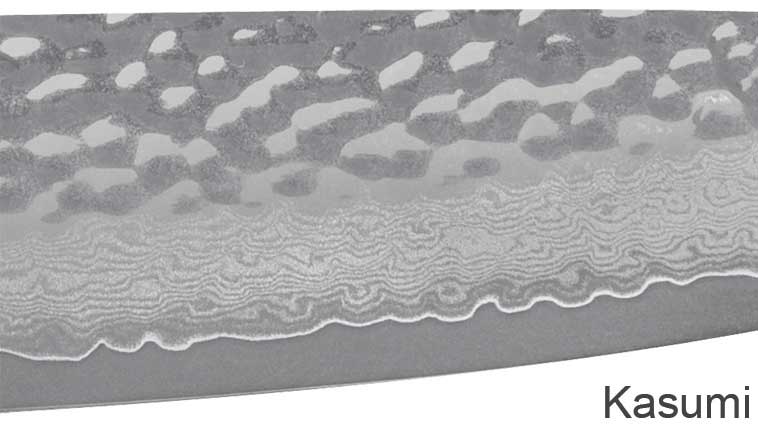
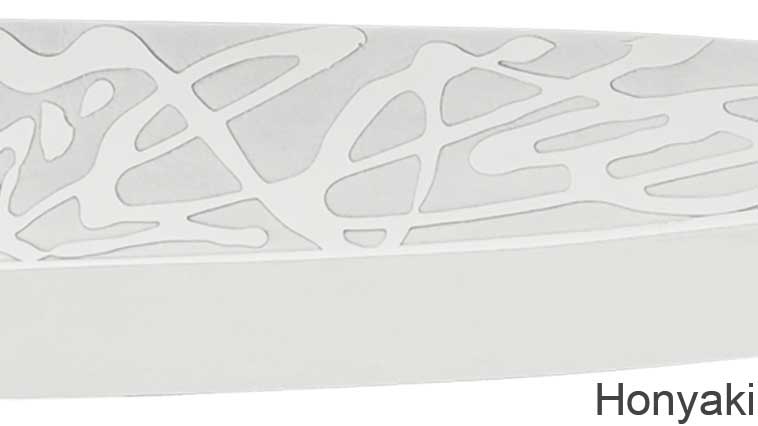
COMPOSITE BLADE TECHNOLOGY
- Combines the best characteristics of two steels in one blade
- Steels are permanently joined
- Patented, proprietary technology
Shun’s innovative Composite Blade Technology enables Shun to provide exceptional handcrafted quality at an amazing price. Here’s how our patented Composite Blade Technology works:
Shun laser cuts complex interlocking blade components from two different types of steel—like pieces of a jigsaw puzzle. Then we permanently join them into a single blade through a metallurgical process known as brazing. Brazing uses a third metal, a braze alloy, to join the two parts being brazed together; in this case, the two interlocking pieces of the knife blade.
You can see the brazed joint in a Shun Composite Blade as the thin copper line between the two blade steels. Is copper strong enough to permanently join steel blade components? In a word, yes. In fact, a brazed joint is as strong or stronger than the metals being joined. The brazed joint adds a decorative touch and enables us to use premium steel along the blade’s the cutting edge—where it belongs. It also means we can bring you Shun quality at a value price. If the whole blade were made of the high-cost steel, the knife could be prohibitively expensive. With Shun's Composite Blade technology, you can get all the cutting advantages of ultra-premium steel without having to pay an ultra-premium price.
Our Composite Blades also offer another advantage—eye-catching style that is simply unavailable from anyone but Shun.
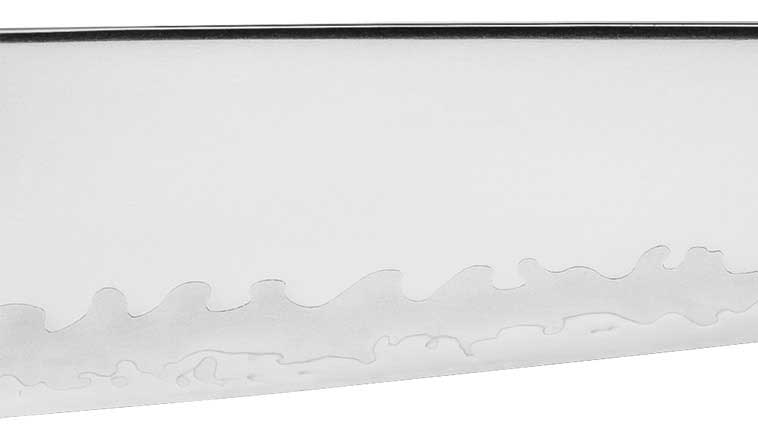
SHUN HANDLE MATERIALS
- Genuine hardwood
- Resin makes it moisture resistant
- Harder and more durable than untreated hardwood
PAKKAWOOD®
PakkaWood is a premium handle material made of genuine hardwood impregnated with resin. The resin makes it moisture resistant, strong, and durable. PakkaWood is intended for use in high-end products that see constant and hard use, especially those used in wet environments. This, of course, makes it ideal for kitchen cutlery handles. Sanding and buffing brings PakkaWood to a beautiful gloss finish. As with natural wood, no two pieces of PakkaWood® are exactly alike. Many Shun handles are made of PakkaWood. It offers our customers all the advantages of wood, including a beautiful look and feel, but since it's easy care and highly water resistant, virtually none of the disadvantages of untreated wood.
MICARTA®
Micarta is an industrial laminate composed of layers of fiber embedded in a resin and subjected to heat and high-pressure to make the material extremely hard and dense. It is both extremely durable and can be very beautiful as well.
TPE
Shun Sora and Haru have TPE (thermoplastic elastomer) handles in traditional Japanese designs. The material is lightweight, durable, and provides excellent grip, balance & easy maintenance.
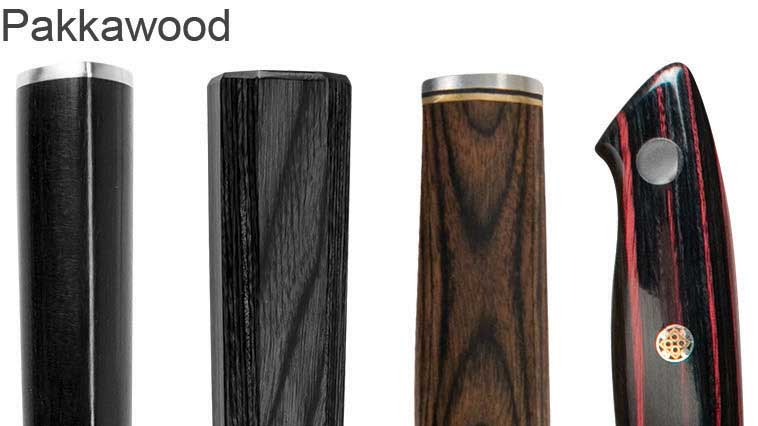
LAYERED DAMASCUS
- Shun layered Damascus is formed by layering different types of metal alloys together
- The layers are forged into a single piece
- The patterns are revealed by grinding then bead-blasting or acid etching the blades
Many Shun cutlery lines are characterized by the beautiful Damascus on the blades. Shun’s Damascus is formed by layering different types of metal alloys together, then forging them into a single piece. The process—and the different characteristics of the layered metals—create the rippling patterns in you see on the blade. The number of layers can vary; many Shun knives, for example, have 32 layers of metal on each side of a VG-MAX core. As Shun artisans grind each Damascus-clad blade from its thickest point at the spine to its razor-sharp cutting edge, they reveal the patterns. To bring them out even more, they bead blast or acid-etch each blade. When acid etched, the layered metals react to the solution in different ways. For example, carbon steel darkens, while nickel silver remains bright. Damascus protects and supports the extremely hard cutting core and enhances stain resistance.
TSUCHIME FINISH
- Tsuchime simply means "hammered"
- Hammering creates air pockets that help food release from the blade
- Shun knives with this finish are hand hammered, in the tradition of ancient Japan
In Japanese, tsuchime (Tsoo-CHEE-may) simply means “hammered” and you will see actual hammer marks on a tsuchime-finished blade. This finish does two things: gives the knife a look that is reminiscent of the handcrafting techniques of ancient Japan; and it creates tiny pockets of air that act as hollow-ground cavities to reduce drag and quickly release food from the blade. Shun’s gorgeous Premier line features a hand-hammered tsuchime blade finish as do some of our exclusive lines. In the tradition of ancient Japanese knife and swordmaking, Shun's tsuchime finish is created by hand hammering each blade.
GRAFFITI-ETCHED BLADE
- "Graffitti etched" is a term created by Shun
- We use the term to describe the etching on the Shun Classic Pro line
- The pattern on each blade style is slightly different
“Graffiti Etched” is a term Shun uses to describe the striking pattern on the blades of our Shun Pro line. The design is acid etched into the steel so that it becomes an integral part of the blade. The etching on each style of knife is slightly different and cleverly incorporates the Shun logo into the design so that the logo becomes part of the overall pattern. This type of blade etching is traditionally found on custom Japanese knives and is used to identify the knife’s maker. The distinctive graffiti-etched pattern you see on Shun Pro knives is uniquely Shun’s.
16° ANGLE CUTTING ANGLE
- Shun blades are thinner, lighter, sharper
- Thinner edges cut more efficiently
- Our 16° cutting angle is extremely sharp, yet lasts a long time
Because of the hard, premium steel from which Shun cutlery is made, the blades can be thinner, lighter, and sharper. A thinner edge cuts more easily by putting less stress on the edge—so fewer strokes do the job. Thinner edges are easier to control as well, making cutting smoother and, once again, relieving stress on the edge. Shun’s handcrafted Japanese knives are sharpened to a precise 16° angle on each side of the blade (for double-beveled blades, this means a comprehensive angle of 32°). For comparison’s sake, European-style blades are generally sharpened to 20-22° each side for a comprehensive cutting angle of 40-44°. Due to the premium-quality steel we use for the cutting core of our blades, Shun’s incredibly sharp edge will nevertheless last an incredibly long time before resharpening is needed. Experience shows that with Shun you get extremely sharp edges that last an extremely long time.
